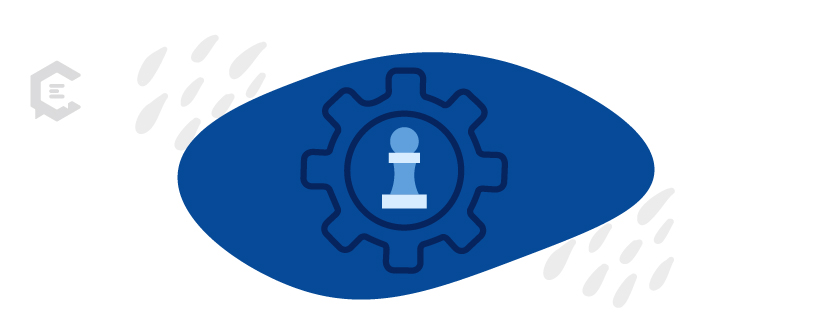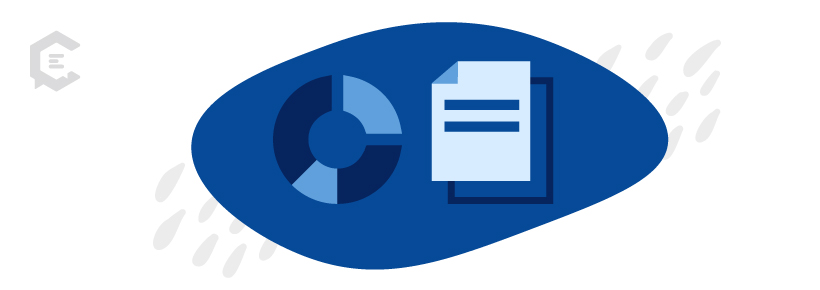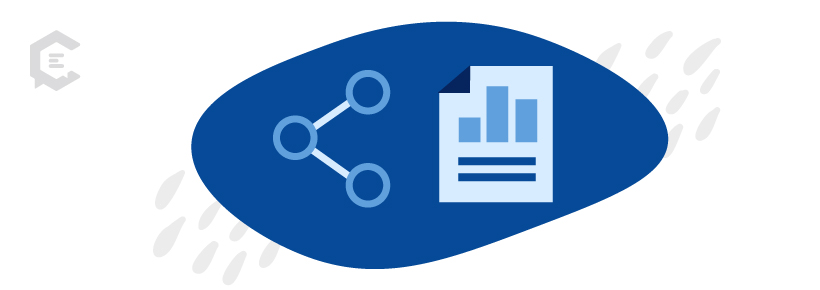Infographics quickly convey information in a visually appealing way.
They can effectively grab attention. Plus, they get readers interested through engaging visuals, stats, research, and copy.
In this article, we’ll discuss the benefits of infographics, best practices, and how to create one as part of your content marketing strategy.
What is an infographic?
As the name implies, infographics combine information (info) with graphics. They illustrate the information featured in a stimulating design.
Visual marketing like infographics works because people tend to scan content. Visuals also increase the likelihood that people will remember, learn, and understand the content they’re consuming.
According to HubSpot, infographics are the fourth most-used type of content marketing. B2B enterprises have adopted them at the fastest growth rate. With 67% of B2B brands using them to clearly explain complex topics.
Any business, from B2B to B2C, can use infographics in content marketing strategy. Use the following steps to add them to your marketing mix:
1. Strategize an outline
First, it’s helpful to create an outline of your infographic so you can organize your content.
An outline helps you:
- Create a compelling journey to take readers on.
- Understand the key takeaways you want from your infographic.
- Identify the research you need to populate the infographic.
To create an infographic outline, you can use the following template:
- Headline: Use keyword research based on your target audience to guide the direction of your infographic. You’ll want to feature your target keyword in the headline. So, use that as inspiration for the title of your infographic.
- Subheads: The infographic subheadlines, or subheads, are the points that expand on the title. Infographics are a great format for listicles. It immediately tells a reader how many points they’ll get in a single piece of content. They’re also good for how-to and steps-based content. The visual map of an infographic takes users on a journey. Use your headline to brainstorm subheads that expand on it. You can use additional keywords to influence subheads, as well.
- CTA: Always conclude an infographic with a relevant call to action (CTA). This motivates users to take another step on their journey with your brand. The CTA should relate to the infographic content the user just consumed.
Once you have an infographic outline, you’ll have a general idea of the direction you’ll want to take the copy and visuals. You can then move on to the next step.
2. Create infographic copy
Now, it’s time to research the infographic content and fill out your outline.
Infographics don’t necessarily need research to be effective. For example, say you’re creating a how-to infographic that breaks down the steps of a recipe. You can simply present the steps in a visually appealing way.
You can use research to back up points in infographics that are more serious and informative. When you list resources at the bottom of the infographic, those sites might take notice and promote your infographic. Plus, outbound links can help your content marketing strategy. They help you build trust and authority with your content.
As you edit infographic copy, lead with a visuals-first mindset. People tend to scan web pages, which is why infographics can be a really powerful form of content marketing. In addition to subheads, infographics may feature stat callouts, bullets, lists, and other elements that make content more scannable.
Each team will have a unique strategy for how to write infographics. The strategy may differ depending on the subject.
For example, a data-driven infographic may start as an article. Then, you can edit the article can down into shorter, bite-size pieces of content for an infographic.
Whatever your infographic topic, focus on making copy short and simple. You’re writing with the visuals and scanners in mind.
3. Design the infographic
Once you have the infographic copy, it’s time to create the graphics for a cohesive and visually appealing piece of content. Anyone can create an infographic using a free design tool like Canva. Writers can also call out visuals they’re thinking of in a copy document to help guide a designer.
Infographics are typically designed in vertical layouts. That way, a scroller on a device like a smartphone can scroll through the content.
If you’re creating an infographic based on a single stat, you’ll have more freedom in the layout of the design.
You can customize the design based on where you want to share it, like a square for Instagram, for example. But for storytelling infographics that will live on websites, use a vertical design for scrollers.
Use your brand marketing guidelines, like colors and fonts, when you design the infographic. That helps make the infographic consistent with your branding. It will also be more recognizable, so people associate the content with your brand.
4. Share the infographic
Once you’ve designed your infographic, it’s time to share it!
Some ways to spread the reach of your content include:
- Create single-image graphics that promote the infographic. This could be an outstanding stat or tip from your infographic. Customize that single piece of content so it’s optimized for each channel. Share the photo and link to the infographic in the caption.
- Film a short explainer video that promotes the infographic. You can promote infographics on video sites, like YouTube, TikTok, and Snapchat. Film a talking head or a graphic-focused explainer video that teases the infographic. Then, link to it in the caption to drive pageviews.
- Turn the infographic into a slideshow. You can also repurpose infographic content by breaking it down into a slideshow format. Highlight your most compelling stats and tease the full infographic. Alternatively, use the infographic to create slideshow content that keeps people engaged on your social channels.
- Link to the infographic in other forms of content. If you have a blog or you send out email newsletters, you can link to the infographic wherever it’s appropriate.
- Send it to relevant content creators. You can also extend your infographic’s reach by sending it to other content creators. For example, say you’re a financial services company that created an infographic on the best investments for the year. You could send the infographic to finance bloggers. They might share it on their own websites or social media channels.
When you promote infographic content, use hashtags and keywords to extend its reach. Create a social media message that leaves users wanting to learn more, so they’re motivated to click over to the infographic.
Always lead with value
When you dedicate time and resources to creating an infographic, first strategize how it will benefit your intended audience. One high-value infographic has the potential to perform better compared to several poorly conceived and executed infographics.
Consider the following:
- What are your target audience’s desires and pain points?
- How can your infographic serve your target audience?
- How can you organize and design your content in the most visually appealing way?
Then, optimize your infographic reach by sharing it on channels your target audience uses. Add keywords and hashtags that can help make it more visible on those channels. Include social sharing buttons on the infographic page itself. So, happy content consumers can share in just a few clicks.
If you’d like to get expert help for creating infographic copy and design that drives results, contact ClearVoice for a free content strategy session for your brand.







